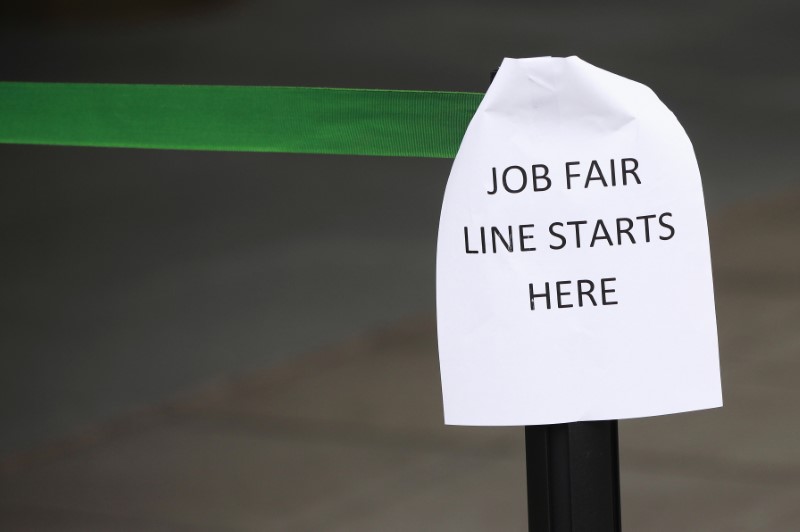By Lucia Mutikani
WASHINGTON (Reuters) - Rising rents lifted underlying U.S. inflation in November, pointing to a steady build-up of price pressures in the economy that could support more interest rate increases from the Federal Reserve next year.
The prospects of further monetary policy tightening in 2017 were also bolstered by other data on Thursday showing a drop in the number of Americans filing for unemployment aid last week.
The Fed raised interest rates on Wednesday for the second time since the 2007-2009 financial crisis and forecast three rate hikes in 2017. In addition to rising oil prices and a tight job market, inflation is likely to get a boost from U.S. President-elect Donald Trump's proposed expansionary fiscal policy agenda.
"Inflation is moving in the right direction, all the conditions for stronger inflation are in place. I don't think the Fed is behind the curve. We expect the next rate increase in March," said Ryan Sweet, senior economist at Moody's Analytics in Westchester, Pennsylvania.
The Labor Department said its Consumer Price Index excluding volatile food and energy costs rose 0.2 percent last month after edging up 0.1 percent in October. Rents accounted for most of the increase in the so-called core CPI last month.
The core CPI advanced 2.1 percent in the 12 months through November after a similar gain in October. The overall CPI rose 0.2 percent as gasoline price increases slowed and food costs remained soft. With oil prices hovering around $50 per barrel, gasoline prices are likely to push higher.
The overall CPI shot up 0.4 percent in October. In the 12 months through November, the CPI increased 1.7 percent, the biggest year-on-year gain since October 2014. It rose 1.6 percent in the year to October.
The Fed has a 2 percent inflation target and tracks an inflation measure which is currently at 1.7 percent.
In raising its benchmark overnight interest rate by 25 basis points to a range of 0.50 percent to 0.75 percent, the U.S. central bank on Wednesday noted that inflation had increased since "earlier this year" and said it expected it to rise to its target "over the next couple of years."
Fed Chair Janet Yellen said the rate hike was "a vote of confidence in the economy."
The incoming Trump administration plans to boost infrastructure spending and cut taxes to foster a faster pace of economic growth. The fiscal stimulus, however, will come at a time when the economy is expected to be at full employment.
"Inflation is warming up and there will only be more price pressures if Trump and his advisors can pump up the volume on economic growth," said Chris Rupkey, chief economist at MUFG Union Bank in New York.
In a second report, the Labor Department said initial claims for state unemployment benefits fell 4,000 to a seasonally adjusted 254,000 for the week ended Dec. 10. It was the 93rd straight week that claims were below 300,000, a threshold associated with a healthy labor market. That is the longest stretch since 1970, when the labor market was much smaller.
The dollar (DXY) soared to a 14-year high against a basket of currencies as the data backed the Fed's hawkish stance. Prices for U.S. government bonds fell, with the yield on the benchmark 10-year Treasury note hitting more than a two-year high. Stocks on Wall Street were trading higher.
UPBEAT DATA
Other reports on Thursday also struck a positive note, with upbeat assessments on manufacturing and the housing market.
The National Association of Home Builders/Wells Fargo Housing Market Index, a measure of homebuilder confidence, surged this month to its highest level since July 2005. Builders anticipated strong sales despite rising mortgage rates.
Separately, the New York Fed said factory activity expanded in New York State in December, driven by a surge in new orders.
The Philadelphia Fed also reported a pickup in manufacturing in the mid-Atlantic region this month. Both regional Fed surveys showed manufacturers reporting they were paying higher prices for inputs. In New York State, factories were also increasing prices for their goods.
Rising input costs and prices for manufactured goods should feed through to higher inflation over time.
Last month, gasoline prices rose 2.7 percent after jumping 7.0 percent in October. Housing continued its upward march in November, with rents increasing 0.3 percent last month. Owners' equivalent rent of primary residence also gained 0.3 percent after a similar rise in October.
There were increases in the prices of a range of other goods and services last month including used cars and trucks, which rose for the first time since February. The cost of motor vehicle insurance increased 1.0 percent.
But consumers got some relief. Food prices were unchanged for a fifth straight month and food consumed at home declined for a seventh consecutive month. While the cost of doctor visits increased 0.6 percent, prices for prescription medicine fell 0.6 percent and the cost of hospital services slipped 0.1 percent.
Apparel prices also fell, reversing October's increase. Airline fares declined for a second straight month and prices for new motor vehicles were down.
^^^^^^^^^^^^^^^^^^^^^^^^^^^^^^^^^^^^^^^^^^^^^^^^^^^^^^^^^^^^^^^^^^^^^^^^^^^^^^
U.S. jobless claims interactive http://tmsnrt.rs/2gbkbf2
U.S. inflation (CPI interactive) http://tmsnrt.rs/1N6BwRs
Homebuilder sentiment interactive (NAHB) http://tmsnrt.rs/2g1LN6w
New York manufacturing graphic http://tmsnrt.rs/2ehLgbZ

^^^^^^^^^^^^^^^^^^^^^^^^^^^^^^^^^^^^^^^^^^^^^^^^^^^^^^^^^^^^^^^^^^^^^^^^^^^^^^